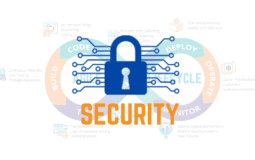Software development is a common practice in today’s age and time. The cycle of software development consists of several steps. Automation now plays a substantial role in the process of building software. Developers are likely to use cloud services and other tools to speed up their development cycle for continuous and quick delivery. It is also of significance to recognize the factor of integrating security, and hence this is where DevSecOps comes in. Read on to gain a deeper insight into DevSecOps and how it contributes to secure and continuous software delivery.
What is DevSecOps?
DevSecOps stands for development, security, and operation, i.e., developing and designing software while involving the security aspect in the cycle. Conventionally, security became part of the software development process as the last step or at a later stage. However, the main idea of DevSecOps is to integrate security as a part of the application infrastructure from the beginning. This way, issues related to security can be fixed at an earlier stage and much more quickly than at the end of the development cycle. Hence, security and compliance with standard rules are essential elements of the DevSecOps process.
What is Continuous Software Delivery?
The main reason DevSecOps is being used is because of practices of continuous software delivery. There was a time when software development was a process that took months or even years, but in a fast-growing world where technology plays an essential role, software requirements and demands have increased. Continuous delivery refers to the idea of producing software in short cycles, and hence versions of it can be released at any time. This is done by employing automation for frequent software building and repeated testing.
How DevSecOps Ensures Continuous and Secure Software Delivery?
There are certain steps and DevSecOps practices that are included in the development cycle to increase the level of security. Containers are extensively used for software these days. To increase the level of security, container platforms that have integrated security features should be used. The containers should be isolated from the network and other microservices to avoid being a target to attackers. Security testing can be employed while building containers to identify any security vulnerabilities or authentication issues that may be present.
Moreover, multiple tests and analyses can be carried out that work as DevSecOps tools to provide security to the software cycle. Containers are monitored during their execution to define security and authentication checks at different levels.
DevSecOps enhances the authentication mechanisms. This way, there can be tight access control. Under DevSecOps practices, secure API gateways can be installed to increase authorization and reduce the chances of any attacks.
Another method is Dynamic and Interactive Application Security Testing which looks for any flaws or vulnerabilities that may be present in the software’s interfaces. Similarly, there can be security issues in the code as well. To counter this problem, Static Application Security Testing is a tool that can aid in identifying any such complication in the code.
For a secure continuous delivery, DevSecOps allows for automated audits to comply with the security policies and removal of any errors that may be present. There is a need for security to be employed end to end, so it is essential to have teams assigned solely dedicated to security maintenance in order to build the software securely from the earliest stage to the final stage. This means that the development teams must be trained to code in a way so as to maximize security and software reliability.
Furthermore, built-in security features such as automated tests are another way to ensure security is prioritized to deliver on a continuous basis. Security should be monitored throughout the pipeline. Security professionals can generate security alerts to ensure secure continuous delivery.
Issues relating to security should also be adequately tracked to detect any vulnerabilities that may be present. Adding on, other practices such as tracking security controls for every delivery, clearer change management processes, and being able to attribute actions to individuals involved in the cycle, are some actions that are used to amplify security.
Therefore, it is critical to understand the importance security holds for secure and continuous software delivery. The continuous delivery pipeline needs to implement procedures to identify security issues through automation because manual processes would mean that the problems may be identified at a delayed and later stage, and this leads to additional costs.
Ending Note
DevSecOps involves security as a factor in its integrated development environment. Thus, it ensures transparency from the initial stage of software development.



